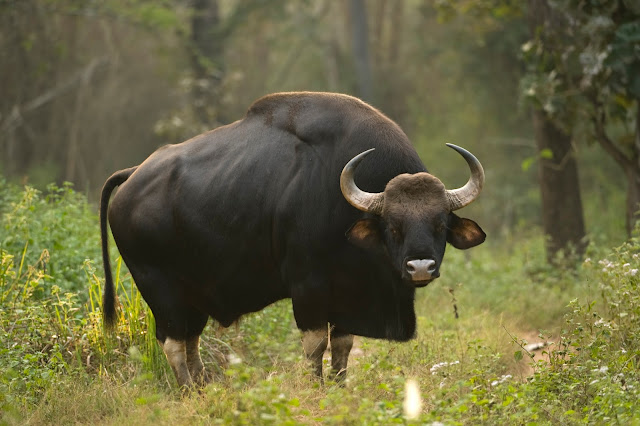Mugger Crocodile-Mythical Water Monster
Now take a dip of fresh water to refresh yourself.....
And get ready to see "THE MYTHICAL WATER MONSTER IN INDIA- MUGGER CROCODILE"
Introduction Part
- The mugger crocodile, also called the Indian, Indus, Persian, Sindhu, marsh crocodile or simply mugger is found throughout the Indian subcontinent and the surrounding countries, like Pakistan where the Indus crocodile is the national reptile of Pakistan.
- It is one of the three crocodilians found in India. The others being the gharial (See my previous post "Gharial - The Fish eater Crocodile" ) and the Saltwater Crocodile.
Characteristics
- Mugger crocodiles have 19 upper teeth on each side; a snout that is one and a half as long as broad at the base; a rough head but without any ridges.
- The mugger crocodile is considered a medium sized species, said to grow upto 4-5 m (13-16 ft.) long.
- The males are larger than females, averaging 3.2 m (10 ft.) compared to 2.45 m (8.0 ft.) in females.
- Sexual maturity is obtained at around 1.7-2 m (5.6 - 6.6 ft.) and 2.6 m (8.5 ft.) for females and males respectively.
- The largest specimen in the British Museum measures 3.7 m (12 ft.).
- It is a more heavily armoured species with enlarged scutes around the neck.
- Adults are dark grey or brown, while hatchling are tan coloured.
Biology and Behaviour
- Mugger crocodile can achieve speed of around 8 mph over a short distance in pursuit of prey.
- They can swim much faster than they can run- achieving speeds of 10 to 12 mph in short bursts- and can cruise at about 1 to 2 mph.
- Being a large carnivorous reptile, the mugger crocodile eats fish, snakes, turtles, birds and mammals.
- The mammalian prey are usually small to medium sized, such as monkeys, squirrels, chital and others.
- Large adults will sometimes prey on large mammals, such as Sāmbhar and large bovines, like cattle and domestic water buffalo.
- This species is generally considered to be occasionally dangerous to humans, but nowhere near as notorious as the much larger salt crocodile.
Distribution
- The mugger crocodile can be found in India, Bangladesh, Sri Lanka, Pakistan, Nepal, the Southern tip of Iran, probably in Indo China and at one point, even in southern Iraq.
- The mugger is the only crocodilian found in Iran and Pakistan.
- This crocodile is the most common and widespread of the three species of crocodiles in India, far outnumbering the much larger saltwater crocodile within the country.
Mugger Conservation
- All wild populations of mugger are legally protected, and management programs intended to restore populations have been very successful.
- Widespread captive breeding programs have restocked wild populations and now have a surplus of captive bred crocodiles as suitable habitat is limited.
- The Mugger Management Project in Similipal, India was started in 1979 and was able to rebuild populations, provide muggers for restocking elsewhere and resort eventually to farming the crocodiles.
- The Indian Government has now called an end to all captive breeding programs in India.
Fact File
Use of Tools
- Mugger crocodiles have been documented using lures to hunt prey like birds. This means they are among the first reptiles recorded to use tools.
- By balancing sticks and branches on their heads, Mugger crocodiles are able to lure birds looking for suitable nesting material.
Mugger Crocodile use tools to hunt birds searching for nesting materials
- This strategy, which is shared by the American alligator, is particularly effective during the nesting season, in which birds are more likely to gather appropriate nesting materials.






Comments
Post a Comment